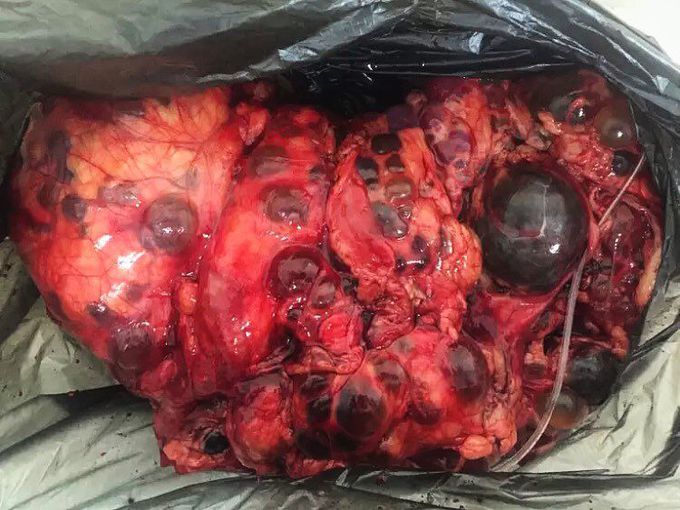


Polycystic horseshoe kidney
Dealing with double trouble, this image shows a kidney with two distinct renal disorders - a polycystic horseshoe kidney! Combination of both polycystic kidney disease (PKD) and horseshoe kidney is super rare, with less than 20 cases ever reported till date. Horseshoe kidney is a rental fusion anomaly that consists of two distinct functioning kidneys on each side of the midline, connected at the lower poles by an isthmus of functioning renal parenchyma or fibrous tissue that crosses the midline of the body. In PKD, clusters of fluid-filled sacs, called cysts, develop in the kidneys and interfere with their ability to filter waste products from the blood. The growth of cysts causes the kidneys to become enlarged and can lead to kidney failure. Concomitant presence of renal polycystic disease and horseshoe anomaly is likely to lower the age of renal failure and therefore warrants closer surveillance of these patients, despite the incidental diagnosis.

